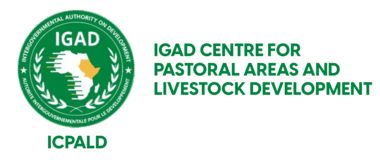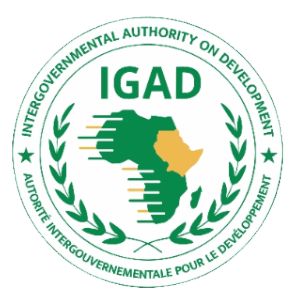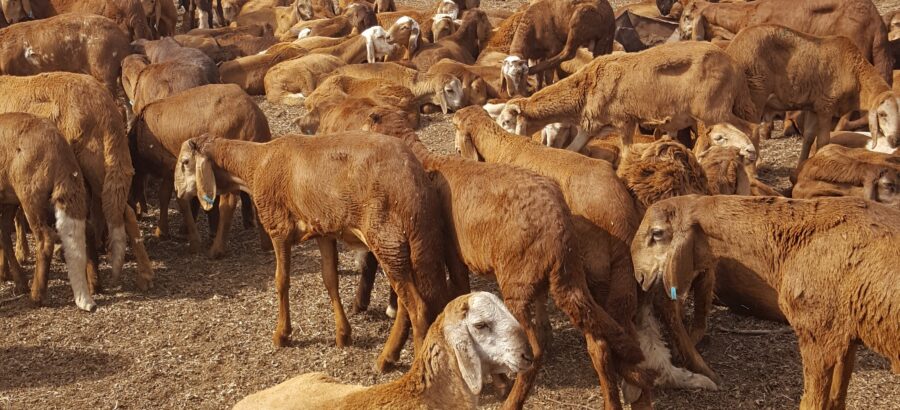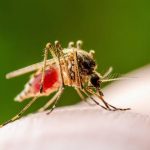Introduction
The IGAD region is rich in livestock resources and covers over 60% of the live animal and about 10% of the meat annual demand of Middle East and North Africa (MENA) countries. In the region, over 80% of the above supply is sourced from the pastoral and agro-pastoral communities who mainly depend on livestock for livelihoods and income. This trading is believed to support about 3 million households in the region.
A rapid survey was made by IGAD Centre for Pastoral Areas and Livestock Development (ICPALD) through questionnaire consultations of five IGAD countries (Djibouti, Ethiopia, Kenya, Sudan, Somalia) exporting to MENA countries. It covered live animals and meat exports. The consultations were made with the exporters of meat and live animals, and regulatory bodies in each country.
The purpose of the rapid assessment was to know the status of live animals, meat exports and effect of Covid-19 pandemic control measures on the supply and demand, as well as prices of the live animals and meat. The findings are believed to help make informed decision and minimize future negative effects on the countries and the livestock sector.
Preliminary Findings on Supply, Demand and Cost of Animals for Export Abattoirs
1. Supply Related
Ethiopia, Kenya and Sudan, which are meat exporting countries, reported that the supply of animals for slaughter decreased by an estimated 20% when compared to the pre-Covid19 pandemic control measures period. Only one of the six export slaughterhouses in Kenya reported adequate supply. The reduction of supply was mainly due to the restricted human/livestock movement, closed markets, curfews, lockdowns or fear of human movement, to avoid contracting corona virus. There are also reports that in some countries, the brokers purposefully reduced the supply of livestock to terminal markets to create artificial shortages inorder to trigger price increases (distorting market prices). In these markets the brokers were observed to keep livestock off the trading floors (markets) in holding grounds in an attempt to push up prices.
The deliberate withholding of supply has increased the price of animals for slaughter on average by 10% to 20 % in different countries. This has had a severe knock on effect. To show the magnitude of their action the assessors made a simple calculation based on an export volume of 5000 tonnes of meat in 2019 by one export slaughterhouse. Using the current (during Covid-19) manipulated purchase price, the company will pay an additional amount of 4.8 million USD (20% increment) to buy animals to produce the same volume of meat. This increment goes mainly to the brokers and live animal traders. The pastoralists and farmers do not know of the increment in unit cost and neither do they benefit. This is happening at a time when pastoralist household food basket (cereals, floor, cooking oil, sugar, salt and tea/coffee) prices have increased by 10-20%.
2. Demand for Meat from Importing Countries
The main destination MENA countries are Kingdom of Saudi Arabia, United Arab Emirates, Qatar, Egypt, Kuwait and Oman. Most exporting countries reported that demand for meat increased due to Ramadan season, and lockdown in some competitors’ countries (Australia, India, New Zealand and Pakistan). The Ethiopian slaughterhouses reported that demand increased by 100% while the sale price was adjusted by 10% mainly due to the higher freight and purchase costs. The presence of the Ethiopian cargo flights between Addis Ababa and cities in the Middle East (ME) helped to improve export performance, but exporters could not fully benefit from the increased demand as the supply for slaughter was limited. On the other hand, Kenyan export slaughterhouses reported reduced slaughter capacity of up to 45 % due to limited cargo flights, cargo space and higher freight charges. The cargo freight charges have increased by 0.5 USD per Kg of carcass exported from Nairobi to Emirates during Covid-19 period. This essentially meant that one meat exporting company that exported 4,000 tonnes in 2019 would have to pay two million USD for cargo for the same export volume if the situation continues in 2020. The increment in freight charges is mainly due to the loss of passenger services.
3. Preliminary Findings on Supply Demand and Cost of Live Animals for Export
On the animals destined for slaughter, the supply for live animal exports was disrupted by measures put in place to control Covid-19. As shown below, the prices of live animals in Somalia destined for export were also manipulated by the brokers and local traders (Table 1). The prices increased by 11% for small ruminants and 5-7% for large animals.
Table 1: Prices of Animals in Somalia in 2020
| Species | 2019 Average (USD) | 2020 Average (USD) | % Cost Increment |
| Shoats (20 kg) – export | 72 | 81 | 11 |
| Cattle (180 kg) | 672 | 710 | 5 |
| Camels (250 kg) | 950 | 1025 | 7 |
The destination countries for live animals are Kingdom of Saudi Arabia, United Arab Emirates, Egypt, Kuwait, Oman and Libya. Most exporting countries reported that demand for live animals also increased due to Ramadan season, and lockdown of all business including export to Middle East, of some competitors’ countries. The sale price of the live animals to the importing countries also increased by 10-20 %. This increase was due to the increased cost of feeds, freight and labor due to restriction, among others.
4. Workers Welfare and Management of Slaughter Animals During Covid-19
- To meet the new social distancing requirements and shorter working hours, export slaughterhouses have had to lay off workers. For equity and fairness some slaughterhouses have allowed employees to work on alternate days or extended time depending on the decision of the companies.
- Curfews (7pm-5am in Kenya) reduced man-hours, hence production.
- Personal Protective Equipment (PPE) is properly distributed for all workers.
- Some abattoirs reported workers are checked for body temperature every morning at work.
5. Key Issues and Recommendations for Consideration
- Strengthen the producers’ (pastoralists and agro-pastoralists) capacity to aggregate animals and negotiate for better terms, and provide direct linkage with the buyers at the terminal markets inorder to protect them from unfair pressure of middle men/brokers. The use of e-marketing needs to be promoted and institutionalized.
- Ease restriction of transportation of inputs and livestock so as to address shortages of inputs which has increased the cost of inputs, while increasing the farm gate (primary market) prices of animals to the benefit of producers.
- Ease the internal and border restriction of transhumance (movement of animals and pastoralists) following Covid-19 testing and other guidelines.
- Negotiate with airlines for cargo space and cargo flights to accommodate the expected growth in demand and increase in destinations, and especially now that flower/horticulture/demand for cargo freight space is growing. In addition, it would be appropriate to campaign for a reduction in unit charges as the volume grows.
- Provide Covid-19 compliant guidelines to slaughterhouse workers.
- Regularly provide PPE for workers in abattoirs, quarantine stations and veterinarians working in livestock market and in field.
- Member States are urged to include pastoralists in the list of those benefiting from social safety nets even as they consider rolling out livestock micro-insurance.
The IGAD Centre for Pastoral Areas and Livestock Development (ICPALD) wishes to thank the Chief Veterinary Officers, National Livestock Trade Officers, Trade Counsellors in IGAD Member State Embassies in the Middle East, and Meat & Live Animal Exporters from Ethiopia, Kenya, Somalia and Sudan for participating in the assessment and providing the information.






